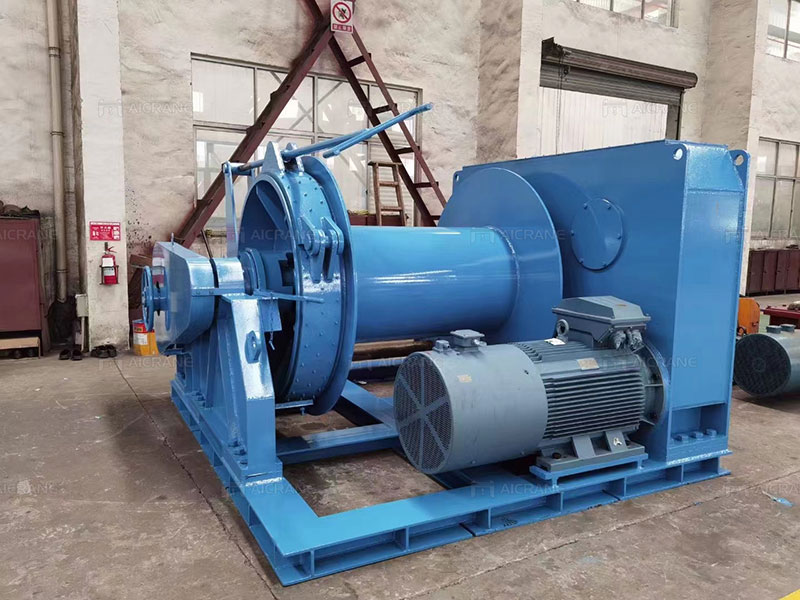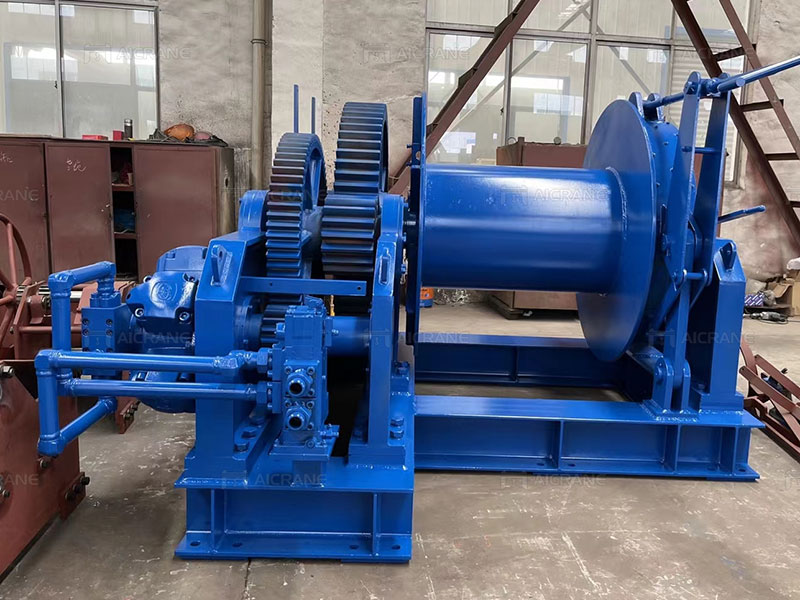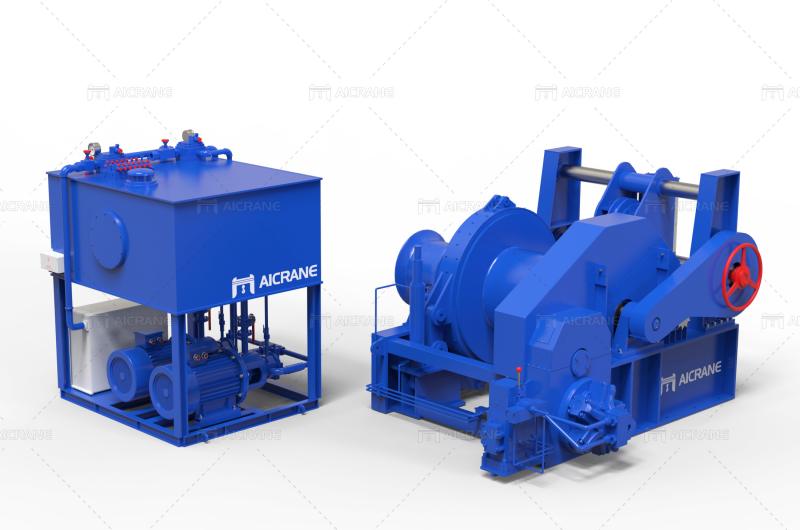The towing winch, a critical piece of equipment for numerous industries including maritime, automotive, and construction, is undergoing significant advancements. As technology evolves, so do the capabilities and efficiencies of towing winches. This article explores the future of towing winches by examining the latest trends and innovations driving the industry forward.
Technological Advancements in Towing Winches
Smart Technology Integration
One of the most transformative trends in towing winches is the integration of smart technology. Modern towing winches are increasingly equipped with sensors, IoT connectivity, and advanced control systems. These smart winches offer several benefits:
Remote Monitoring and Control: Operators can monitor and control winch operations remotely using mobile devices or computer systems. This capability enhances safety by allowing operators to manage winching from a safe distance, especially in hazardous environments.
Data Analytics: Sensors and IoT connectivity enable winches to collect and transmit data on performance metrics such as load weight, operating speed, and cable tension. Analyzing this data helps in predictive maintenance, reducing downtime, and improving overall efficiency.
Automation: Smart winches can be programmed for automated operations, reducing the need for manual intervention. Automation ensures consistent performance and minimizes human error.

Enhanced Power and Efficiency
Advancements in motor technology have significantly increased the power and efficiency of towing winches. Modern winches use high-torque motors that provide greater pulling power while consuming less energy. These improvements are particularly beneficial in heavy-duty applications where high performance is essential.
Electric Motors: Electric winches are becoming more popular due to their efficiency, ease of use, and lower environmental impact compared to traditional hydraulic systems. Innovations in battery technology also allow for longer operational times and quicker recharges.
Hydraulic Winches: While electric winches are gaining traction, hydraulic towing winches continue to evolve with more efficient hydraulic pumps and motors. These winches remain the preferred choice for extremely heavy loads due to their superior power output.
Materials and Durability
The materials used in the construction of towing winches are also seeing innovation. The use of advanced composites and high-strength alloys enhances durability and reduces weight, contributing to overall efficiency.
Synthetic Ropes: Traditional steel cables are being replaced by synthetic ropes made from materials like Dyneema and Spectra. These ropes are lighter, stronger, and safer, as they do not recoil dangerously if they break.
Corrosion-Resistant Materials: Innovations in coatings and materials provide better resistance to corrosion, especially for winches used in marine and outdoor environments. This prolongs the lifespan of the equipment and reduces maintenance costs.
Industry Applications and Trends
Automotive Industry
In the automotive industry, towing winches are crucial for recovery vehicles and off-road adventures. The trend towards electric vehicles (EVs) is influencing the development of winches with lower energy consumption and higher efficiency.
Compact and Lightweight Designs: With space being a premium in modern vehicles, winch manufacturers are focusing on compact and lightweight designs that do not compromise on performance.
Integrated Systems: Some manufacturers are integrating winches into the vehicle’s electrical system, allowing for seamless operation and better energy management.
Maritime Industry
The maritime industry relies heavily on towing winches for various operations, including ship docking, anchoring, and salvage operations. Innovations in this sector are aimed at enhancing safety and operational efficiency.
Automated Mooring Systems: Automated systems are being developed to assist with mooring operations, reducing the need for manual labor and increasing precision.
Environmental Considerations: With increasing regulations on marine pollution, winches are being designed to minimize oil leaks and environmental impact. Electric winches are particularly attractive for this reason.

Construction and Heavy Industry
In construction and heavy industry, towing winches are indispensable for lifting and pulling heavy loads. Trends in this sector focus on increasing load capacity and improving safety features.
High-Capacity Winches: Winches with higher load capacities are being developed to handle the increasing demands of modern construction projects.
Enhanced Safety Features: Safety innovations such as automatic brake systems, overload protection, and emergency stop functions are becoming standard features to protect workers and equipment.
The Role of Environmental Sustainability
As with many other industries, environmental sustainability is becoming a significant focus in the development of towing winches. Manufacturers are striving to create more eco-friendly products by reducing emissions and energy consumption.
Electric and Hybrid Winches
Electric winches, as mentioned earlier, are more energy-efficient and environmentally friendly compared to their hydraulic counterparts. Hybrid winches that combine electric towing winch and hydraulic towing winch systems are also being developed to offer the best of both worlds: the power of hydraulics and the efficiency of electrics.
Sustainable Manufacturing Practices
Winch manufacturers are adopting sustainable manufacturing practices to reduce their environmental footprint. This includes using recycled materials, reducing waste, and improving energy efficiency in production processes.

Future Innovations and Trends
Looking ahead, several innovations and trends are expected to shape the future of towing winches:
AI and Machine Learning
Artificial intelligence (AI) and machine learning are poised to play significant roles in the development of towing winches. These technologies can be used to predict equipment failures, optimize performance, and even automate complex operations.
Predictive Maintenance: AI can analyze data from winch sensors to predict when maintenance is needed, preventing unexpected breakdowns and reducing downtime.
Performance Optimization: Machine learning algorithms can optimize winch performance by adjusting parameters in real-time based on load conditions and other factors.
Modular Designs
Modular winch designs are becoming more popular, allowing for easier upgrades and repairs. This approach also makes it possible to customize winches for specific applications, enhancing their versatility.
Remote and Autonomous Operations
As remote and autonomous operations become more feasible, towing winches will be designed to operate in environments that are hazardous or difficult for humans to access. This includes underwater winches for deep-sea operations and winches for use in extreme weather conditions.
Conclusion
The future of towing winches is bright, with numerous innovations and trends driving the industry forward. From smart technology integration and enhanced power efficiency to advancements in materials and environmental sustainability, the evolution of towing winches promises to deliver greater performance, safety, and versatility. As these trends continue to develop, industries that rely on towing winches will benefit from improved operational efficiencies and reduced environmental impact. Whether in automotive, maritime, construction, or other heavy industries, the advancements in towing winch technology are set to revolutionize how heavy loads are managed and moved.